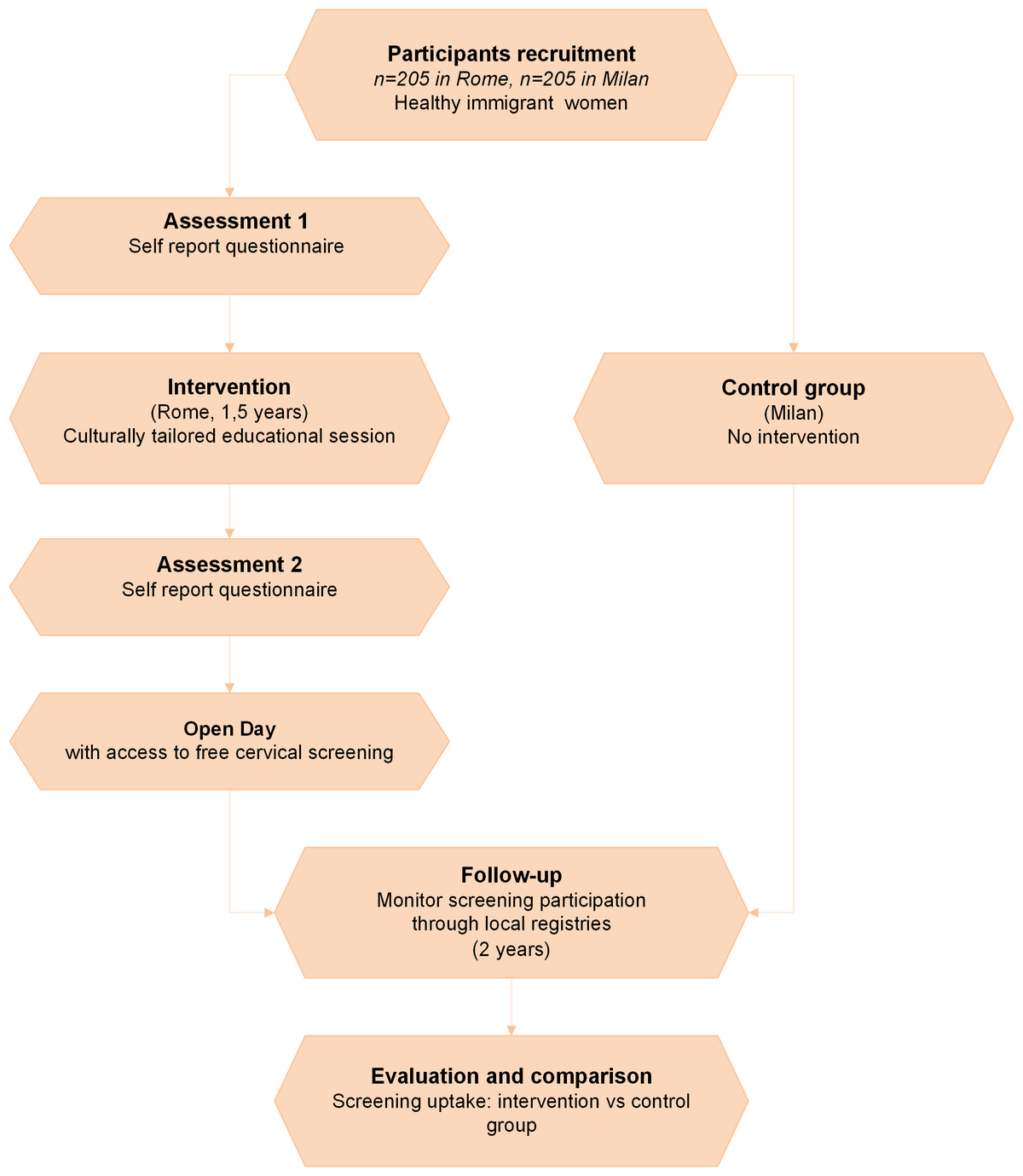INTERVENTIONAL STUDY

This study will test a community-based intervention designed specifically for healthy immigrant women. The initiative will be culturally and linguistically tailored to help reduce barriers and increase participation in cervical cancer screening. The study will compare screening rates between two communities: one receiving the intervention and one serving as a control group.
The project will include 18 months of active intervention and two years of follow-up to assess impact.
Specific objectives
- To design and implement a community-based, culturally targeted intervention for healthy immigrant women to improve their participation in cervical screening
- To obtain information on cervical screening status at baseline and after the intervention from the Local Health Authorities
- To evaluate the effectiveness of the community-based intervention using generalized estimation equations
Methods
We will carry out the intervention in Rome (ASL Roma 2), enrolling 205 healthy immigrant women who have not participated in cervical cancer screening in the last five years.
Eligible participants will be
- aged 25–65
- born in Eastern Europe, Asia, or South-Central America
With the support of cultural mediators and key community informants, women will be recruited through local organizations, social media, and community networks. Participants will be divided into small, culturally homogeneous groups of 15–20 people.
Each group will take part in an interactive 2-hour educational session focused on cervical cancer prevention, early detection, and navigating the Italian healthcare system. Sessions will include open dialogue with researchers and healthcare professionals.
Before and after the session, women will complete a short questionnaire to assess knowledge and awareness. Women will have the opportunity to access free cervical screening after each session.
To measure the impact, we will compare screening uptake two years after the intervention in Rome with a control group of immigrant women in Milan, matched by country of origin. Participation rates will be assessed using local screening registry data.